I need to avoid content related to poker, wine, whiskey, tattoos, Christmas, casinos, and adult material.Based on my research, I'll now create a comprehensive article about tree stump fairy garden ideas. Let me start with the content:
Tree stumps often present a frustrating challenge for homeowners, but these weathered remains can become the foundation for enchanting miniature worlds. Creating tree stump fairy gardens transforms unsightly yard obstacles into captivating focal points that spark imagination and bring magic to outdoor spaces. These whimsical displays combine natural materials, miniature accessories, and creative design to establish charming homes for imaginary fairy folk. Whether working with freshly cut stumps or aged wood that has settled into the landscape, the possibilities for crafting magical scenes are endless. From simple door installations to elaborate village creations, tree stump fairy gardens offer delightful projects that engage both children and adults while breathing new life into forgotten corners of your yard.
1. Classic Tree Stump Fairy Door Installation
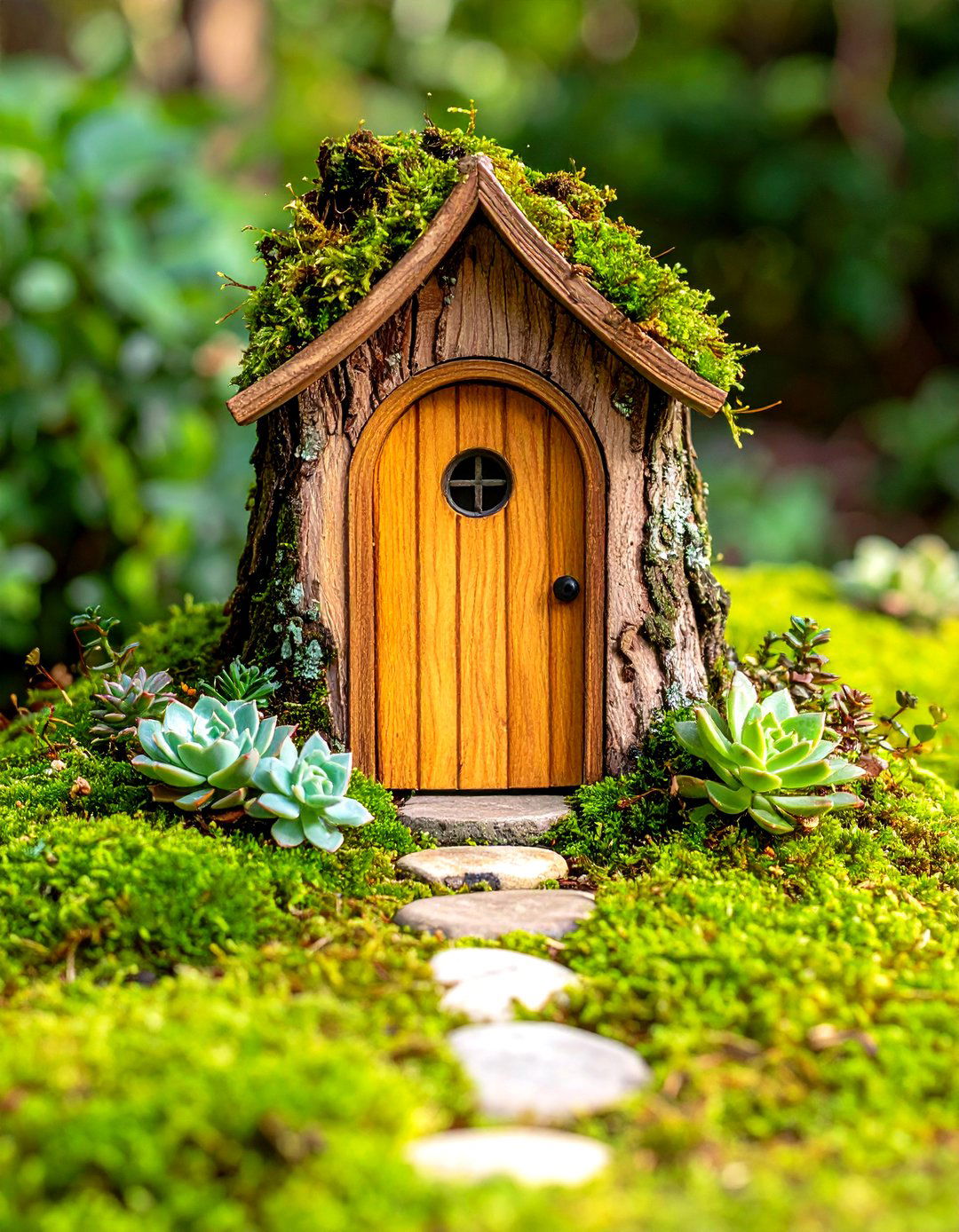
Installing a simple fairy door creates an instant magical transformation for any tree stump in your garden. Choose a weatherproof wooden or resin door that complements your stump's natural coloring and texture. Position the door at the base where natural cracks or hollows provide realistic placement options. Secure with outdoor adhesive or small screws, ensuring the door appears naturally integrated into the wood grain. Add a stone pathway using small pebbles leading to the entrance, and place moss around the door frame to create an aged, woodland appearance. Consider including a tiny welcome mat made from natural materials and miniature landscaping with small succulents or ground-covering plants to complete this foundational fairy garden element.
2. Hollowed Tree Stump Planter Fairy Garden

Transform your tree stump into a natural planter by carefully hollowing out the center to create growing space for miniature plants. Use a chainsaw or chisel to remove the interior wood, leaving sturdy walls for structural integrity. Line the hollow with landscape fabric and fill with quality potting soil suitable for small plants. Select tiny succulents, moss varieties, or miniature hostas that thrive in your climate conditions. Install fairy figurines, tiny furniture pieces, and miniature pathways among the plantings to create scenes within the living garden. This approach combines practical gardening with fantasy elements, ensuring your tree stump fairy garden evolves naturally as plants grow and change throughout the seasons.
3. Solar-Powered Tree Stump Fairy House
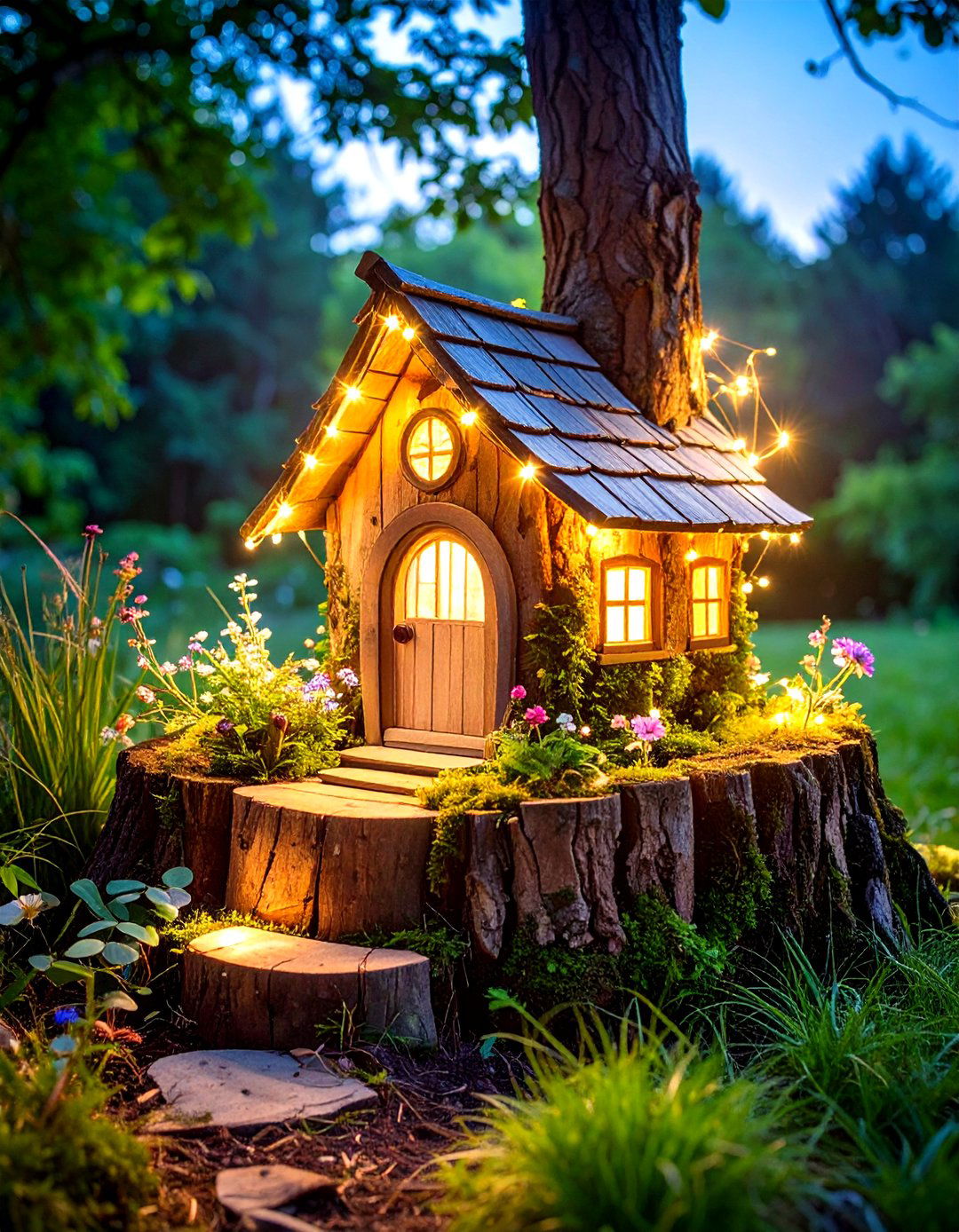
Bring your tree stump fairy garden to life after dark with solar-powered lighting elements that create magical evening ambiance. Install solar fairy doors with built-in LED lights that automatically illuminate when darkness falls. Add solar string lights threaded through drilled holes in the stump to create glowing windows and pathway markers. Choose warm white or color-changing lights depending on your preferred atmosphere. Position a small solar panel discretely behind the stump or among surrounding plants to power the lighting system. Include reflective elements like small mirrors or glass gems that amplify the light effects. This illuminated approach extends the enjoyment of your tree stump fairy garden into nighttime hours while maintaining eco-friendly, wireless operation.
4. Woodland Theme Tree Stump Fairy Village
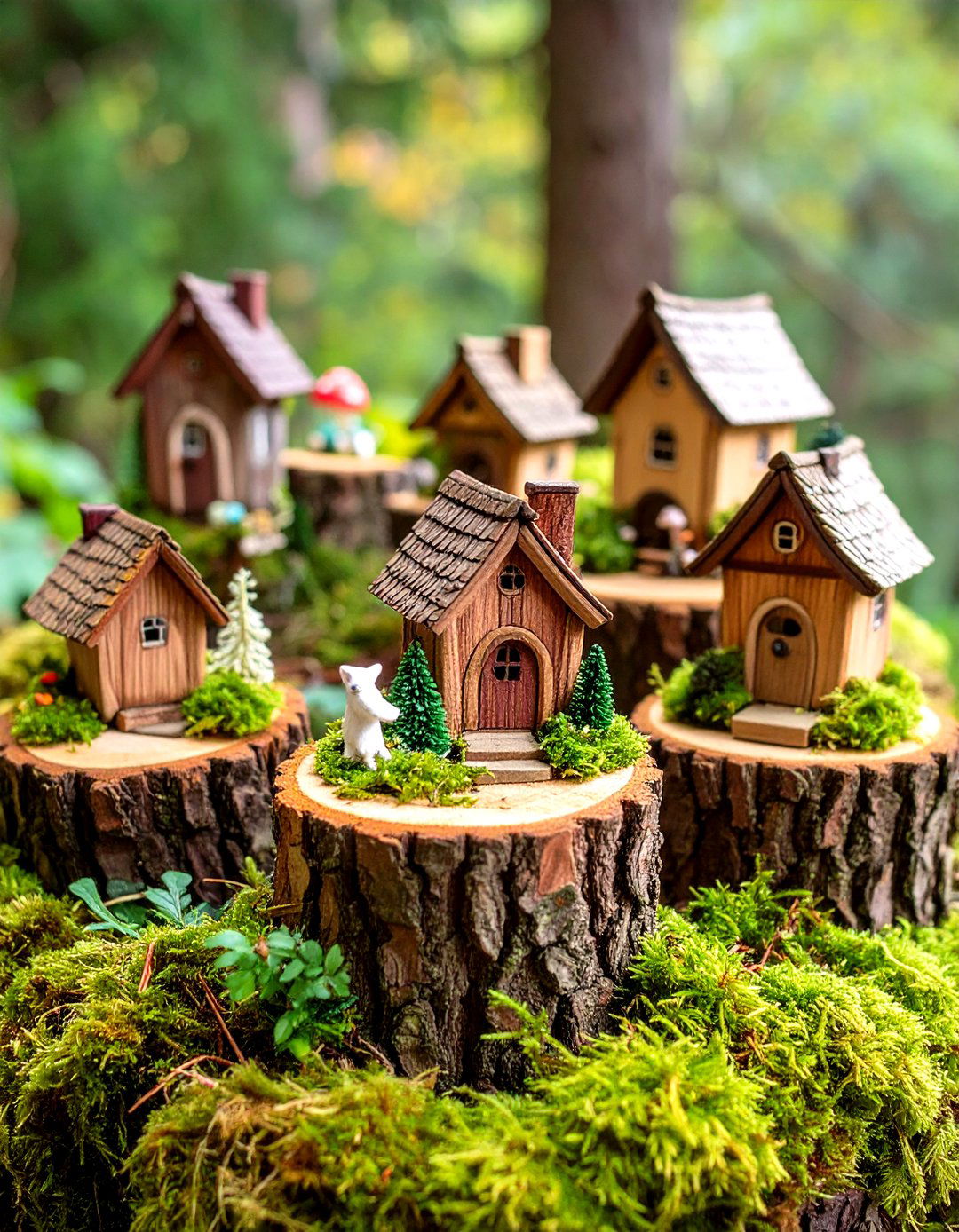
Create an entire fairy community by developing multiple tree stump houses with natural woodland themes throughout your garden space. Gather various sized stumps or logs to represent different fairy dwellings, each with unique architectural features like twig ladders, acorn cap chimneys, and bark roof tiles. Use natural materials exclusively, including pine cone decorations, pebble pathways, and mushroom accessories. Establish connecting trails between houses using wood chips or moss-covered stones. Add miniature woodland creatures like ceramic owls, squirrels, and rabbits to populate the village. Plant native ferns, ground covers, and shade plants around each stump to create authentic forest floor environments. This comprehensive approach develops an immersive fairy world that feels naturally integrated into your landscape.
5. Hobbit-Style Tree Stump Door Design
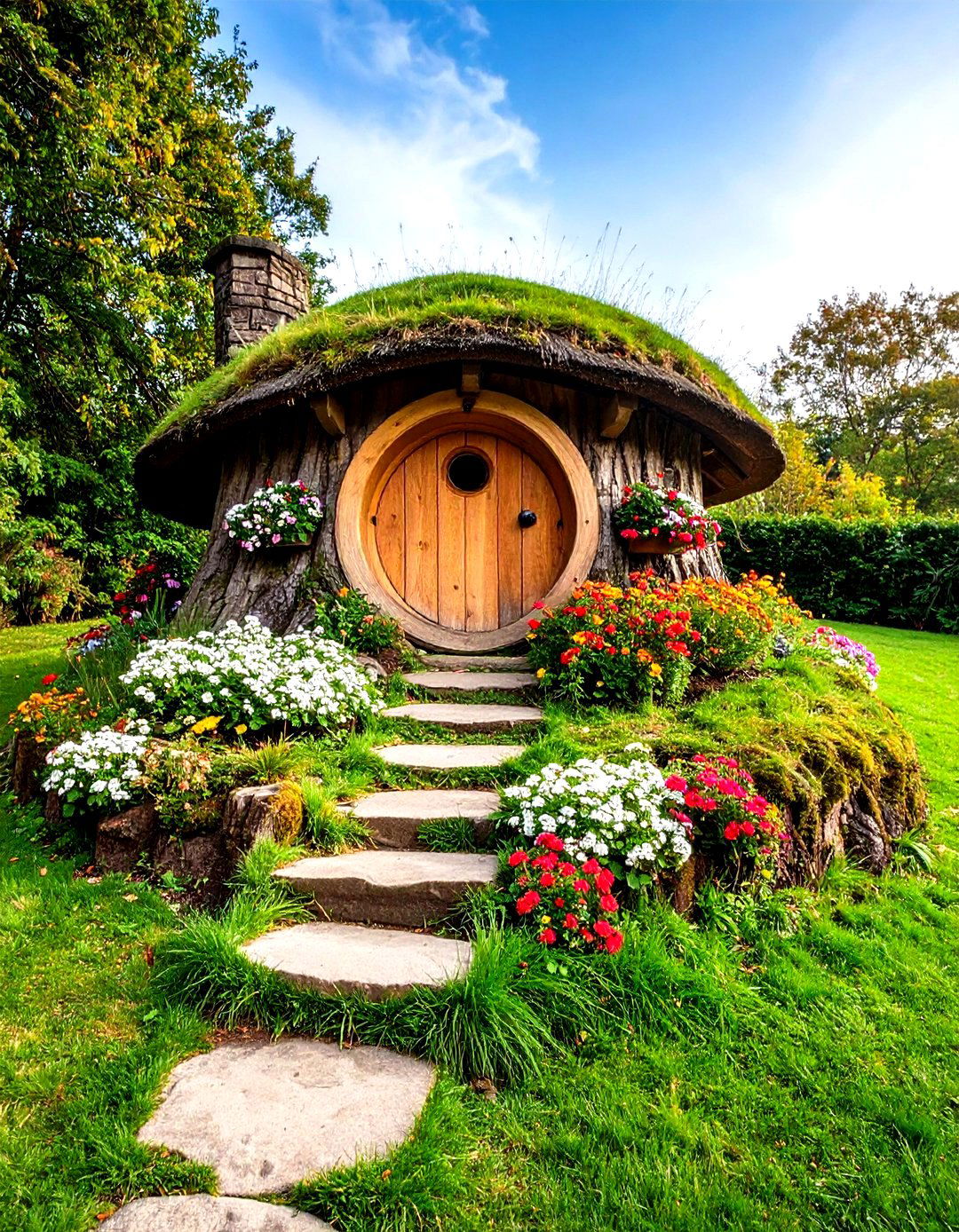
Design your tree stump fairy garden with distinctive hobbit-inspired architecture featuring round doors and earth-covered mounds. Create the iconic circular door shape using plywood or purchase ready-made round fairy doors online. Paint the door in traditional hobbit colors like bright green, blue, or yellow for authentic appeal. Build a small mound of soil around the stump base and plant with grass seed or moss to simulate the hillside homes of the Shire. Add window boxes filled with tiny flowering plants and install miniature garden tools leaning against the door. Include a curved pathway made from flat stones and position a tiny garden bench nearby. This theme appeals especially to fantasy literature enthusiasts and creates a recognizable, story-book atmosphere.
6. Mushroom and Toadstool Tree Stump Fairy Garden
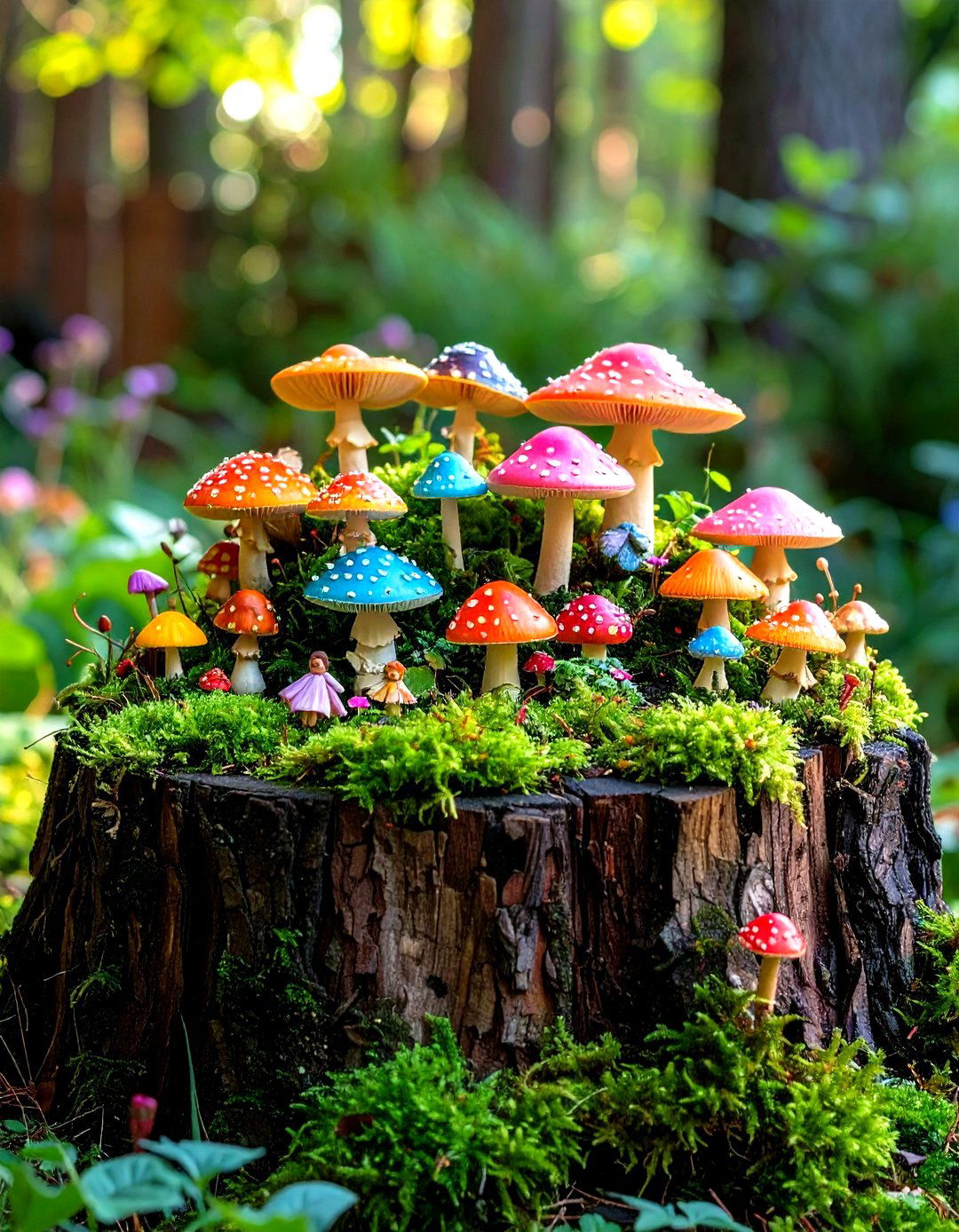
Enhance your tree stump fairy garden with an enchanting collection of colorful mushrooms and toadstools that create a whimsical fairy ring atmosphere. Purchase weather-resistant resin or ceramic mushroom decorations in various sizes and colors, or craft your own using painted rocks and twigs. Arrange mushrooms in natural clusters around the stump base, varying heights and colors for realistic appearance. Add real fungi varieties that naturally grow in your climate, such as oyster mushrooms or shelf fungi. Create mushroom houses by drilling small holes in larger toadstool decorations and installing tiny LED lights inside. Plant mushroom-friendly vegetation like ferns and mosses that thrive in similar conditions. This fungal theme embraces the mysterious, magical aspects of forest floor ecosystems while providing abundant hiding spots for fairy figurines.
7. Miniature Tree Stump Garden Furniture Setup
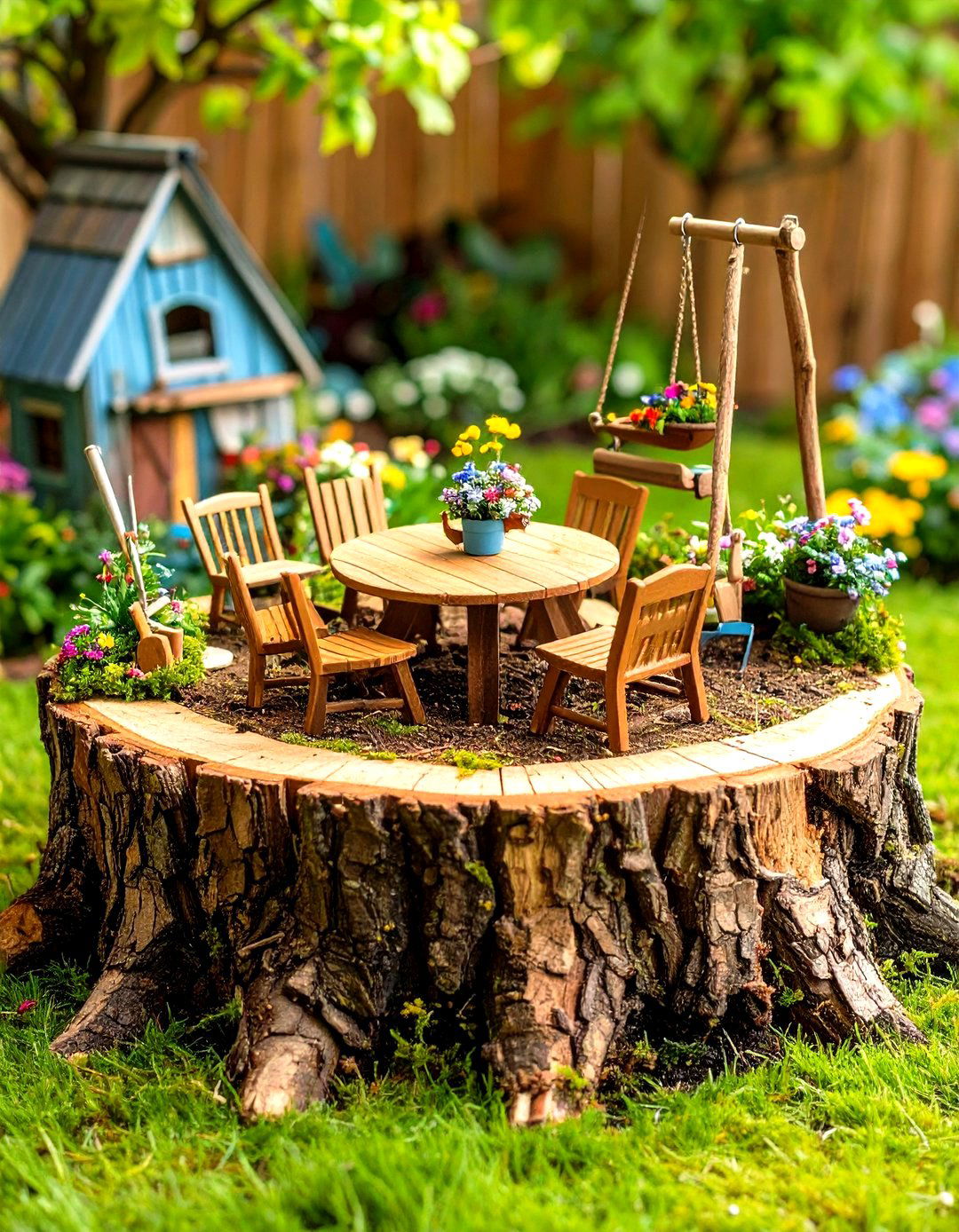
Furnish your tree stump fairy garden with an array of tiny furniture pieces that create cozy living spaces for imaginary fairy residents. Source miniature tables, chairs, benches, and beds from craft stores or create your own using twigs, bottle caps, and natural materials. Position a dining set near the fairy door for outdoor fairy meals, and add a tiny swing suspended from nearby plants or decorative stakes. Include miniature garden tools, watering cans, and planters to suggest active fairy gardening. Create a washing line using thread and tiny wooden clothespins with miniature fabric scraps. Arrange reading nooks with tiny books made from folded paper and miniature cushions crafted from soft materials. These detailed furnishings bring personality and story-telling potential to your tree stump fairy garden.
8. Tree Stump Fairy Garden with Water Features
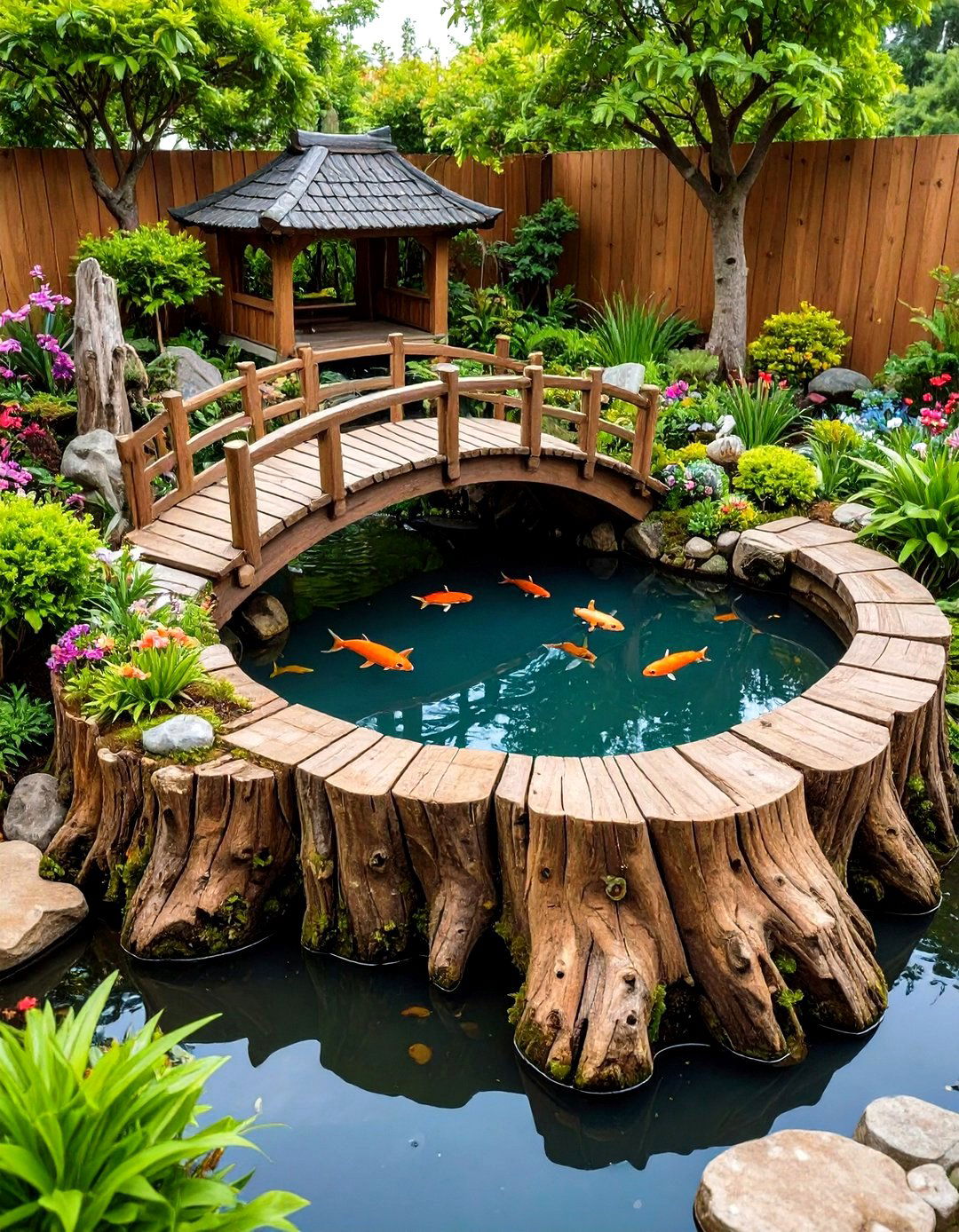
Incorporate water elements into your tree stump fairy garden to create serene, magical settings that attract both fairies and beneficial wildlife. Install a small recirculating fountain system disguised as a natural spring emerging from rocks near the stump base. Create miniature ponds using shallow ceramic dishes painted blue and surrounded by small stones and aquatic plants. Add a tiny wooden bridge crossing the water feature, constructed from twigs and secured with outdoor adhesive. Include stepping stones made from flat pebbles leading across larger water areas. Position miniature ducks, frogs, or fish figurines in the water features for added life and movement. Consider solar-powered water pumps for eco-friendly operation that requires no electrical connections while providing soothing water sounds.
9. Seasonal Tree Stump Fairy Garden Decorations

Design your tree stump fairy garden to change throughout the year with seasonal decorations and plantings that keep the display fresh and engaging. Spring installations feature tiny flower gardens, baby animal figurines, and pastel-colored accessories. Summer decorations include miniature beach scenes, sunny yellow accents, and heat-tolerant plants like sedums. Autumn transforms the space with tiny pumpkins, harvest themes, and warm-colored foliage plants. Winter adaptations focus on evergreen elements, tiny snow scenes created with white sand, and weather-resistant decorations. Store delicate seasonal items during harsh weather and rotate themes every few months. Plant seasonal flowering bulbs around the stump perimeter for natural color changes. This rotating approach maintains year-round interest and provides opportunities for creative redesign.
10. Tree Stump Fairy Garden with Natural Stone Pathways
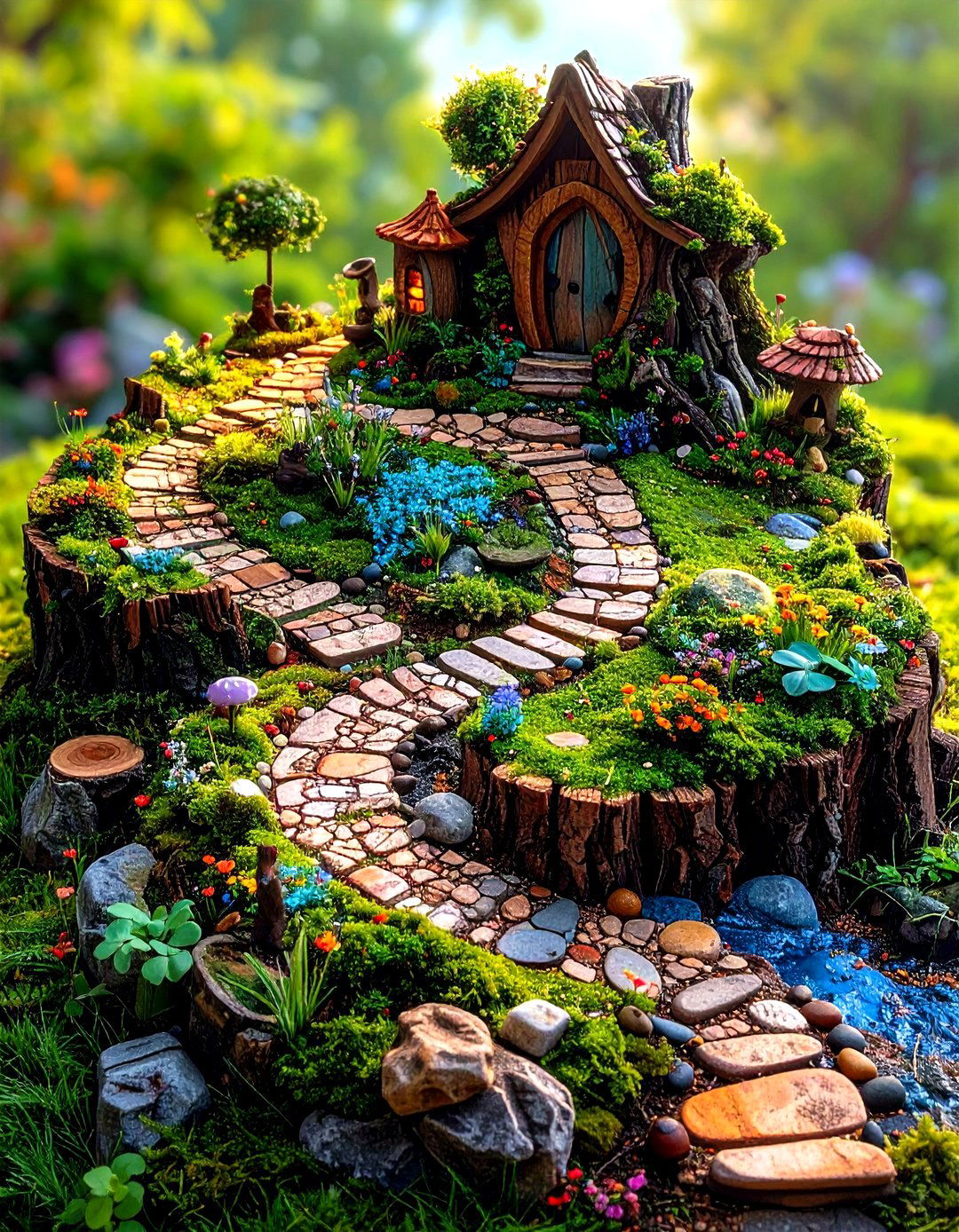
Construct intricate pathway systems throughout your tree stump fairy garden using various natural stone materials that guide visitors through the miniature landscape. Select flat river rocks, slate pieces, or locally sourced stone chips in coordinating colors that complement your stump's natural tones. Design winding paths that connect the main fairy door to various garden features like seating areas, pond edges, and hidden alcoves. Create stepping stone patterns across planted areas, allowing adequate spacing for plant growth between stones. Add sand or fine gravel between larger stones for authentic pathway textures. Include larger accent stones as landscape anchors and position them to suggest natural rock formations. These stone elements provide permanent structure that withstands weather while creating sophisticated, naturalistic design foundations for your tree stump fairy garden.
11. Gnome House Tree Stump Design with Peaked Roof
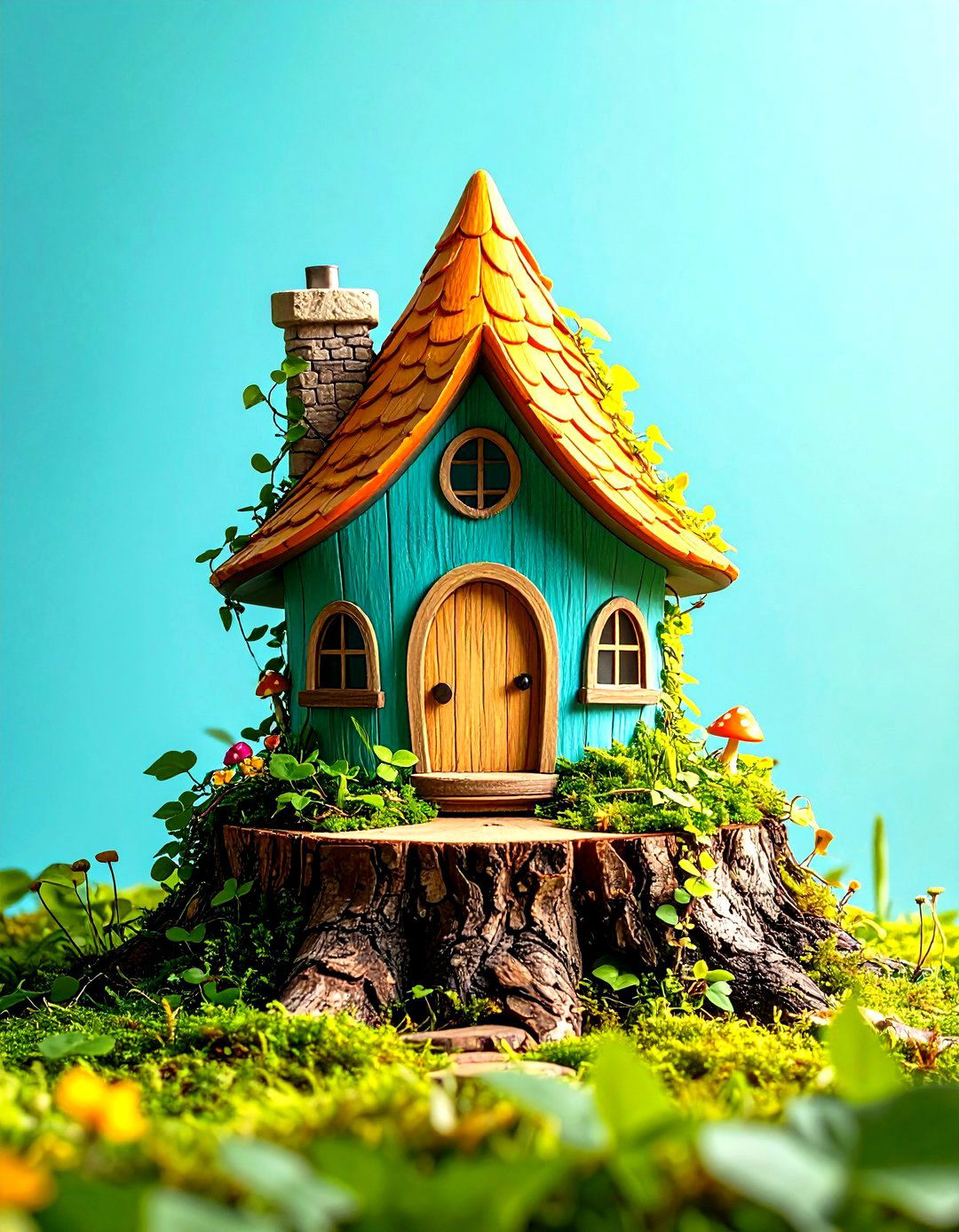
Transform your tree stump into a distinctive gnome dwelling by adding a peaked roof structure that creates classic fairy tale architecture. Cut the stump top at angles to form a gable shape, or attach triangular roof pieces made from weatherproof plywood. Cover the roof with cedar shingles, bark pieces, or artificial thatching material for authentic texture. Install a tiny chimney made from stacked stones or painted PVC pipe, complete with miniature smoke effects using cotton batting. Add dormer windows to the roof structure and include a rustic wooden ladder leading to an upper window. Plant climbing vines like miniature ivy around the structure to create aged, established appearance. Position gnome figurines near the entrance and include traditional gnome accessories like mushrooms, garden tools, and small treasure chests.
12. Tree Stump Fairy Garden with Moss Covering Techniques
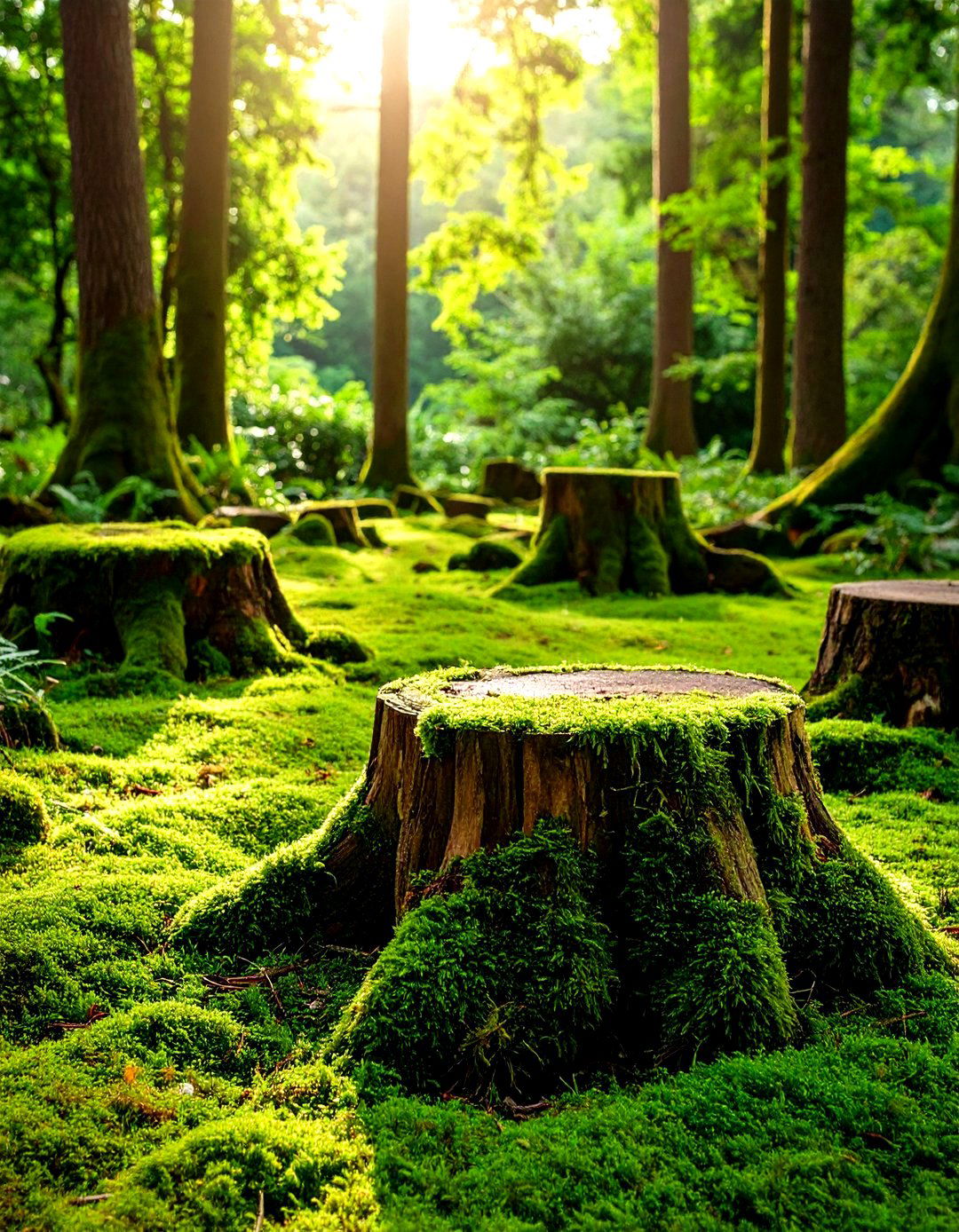
Create lush, forest-like environments around your tree stump fairy garden by cultivating various moss species that provide natural green carpeting and authentic woodland atmosphere. Collect moss from shaded areas of your property or purchase live moss from garden centers specializing in native plants. Prepare the stump surface by keeping it consistently moist and providing adequate shade for moss establishment. Apply buttermilk or moss slurry mixtures to encourage faster moss growth on vertical stump surfaces. Plant different moss varieties to create texture variation, using sheet moss for large areas and cushion moss for detailed accents. Maintain proper moisture levels through regular misting and strategic placement of shade-providing plants. This natural covering technique integrates your tree stump seamlessly into woodland settings while providing authentic fairy habitat conditions.
13. Multi-Level Tree Stump Fairy Garden Terraces
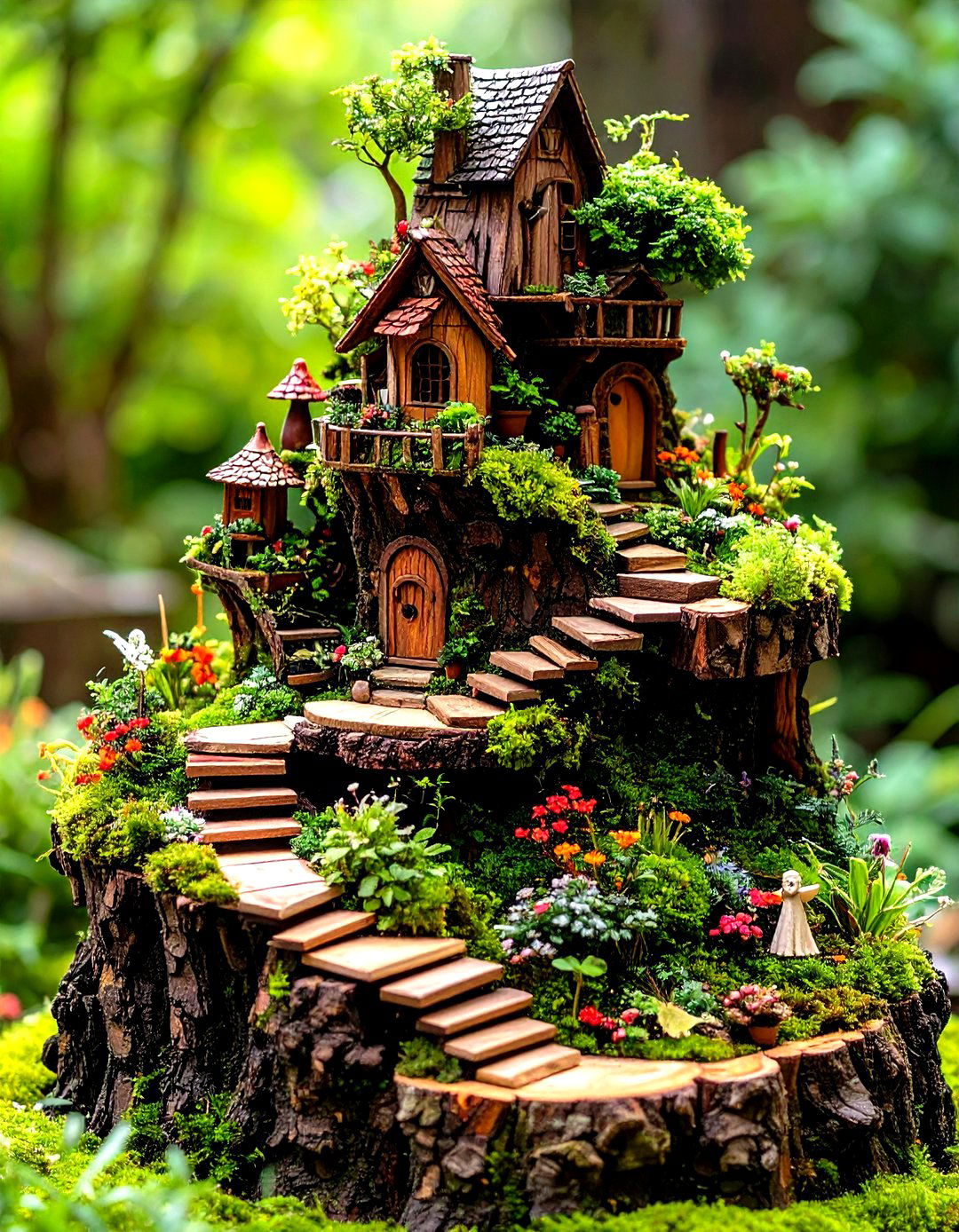
Design sophisticated tree stump fairy gardens with multiple levels and terraced planting areas that maximize growing space and create dramatic visual interest. Cut horizontal shelves into the stump sides at varying heights to accommodate different plant sizes and fairy scenes. Install small retaining walls using stones or twigs to contain soil on each terrace level. Plant each level with appropriate species for the available light and space conditions, placing sun-loving plants on upper terraces and shade-tolerant varieties lower down. Connect levels with miniature staircases made from twigs or small stones, and add tiny railings for safety details. Position fairy figurines at different elevations to suggest active fairy communities using all available space. This vertical gardening approach suits smaller yards while creating impressive, castle-like fairy architecture.
14. Tree Stump Fairy Garden with Miniature Vegetable Plots
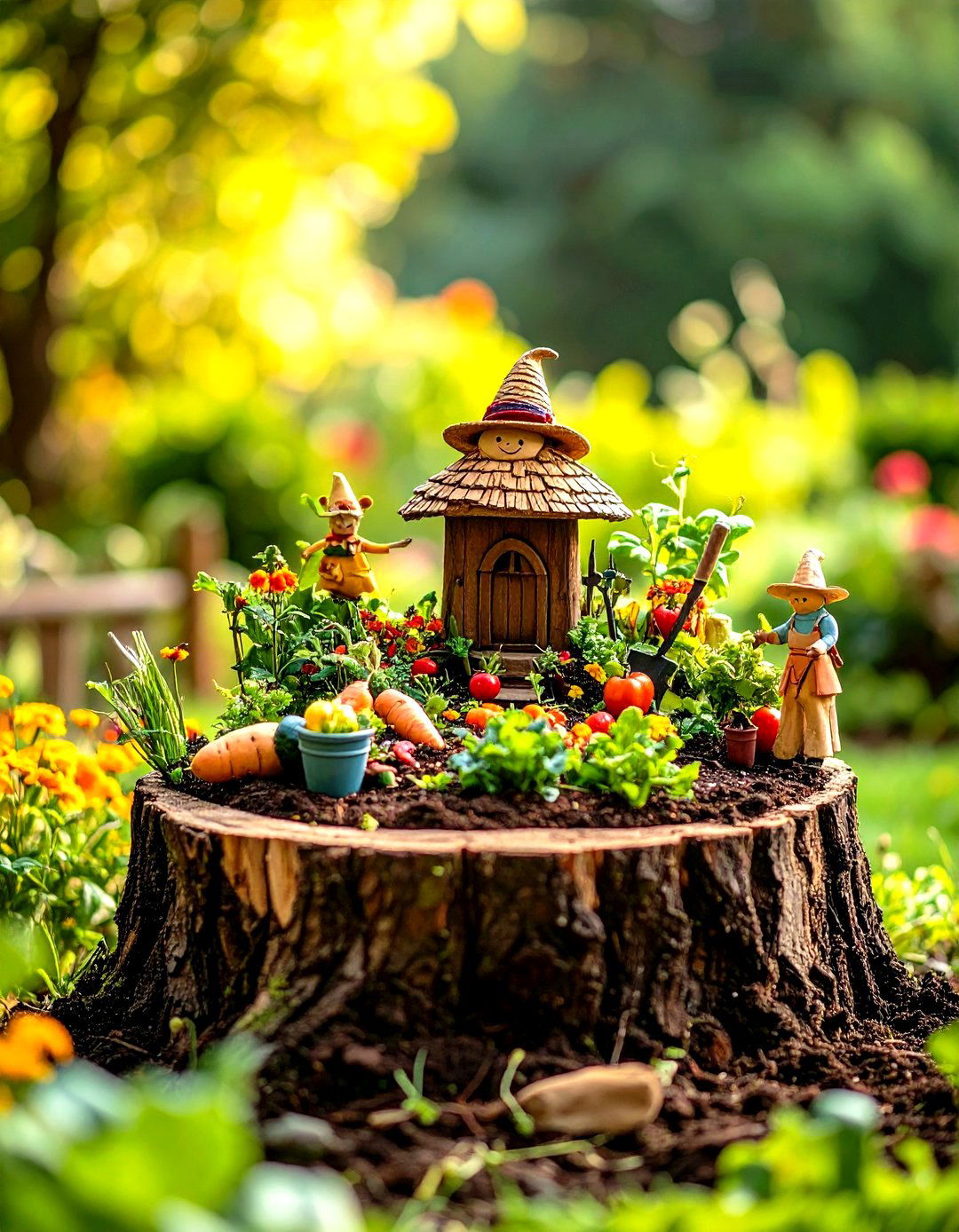
Create productive miniature farms within your tree stump fairy garden by establishing tiny vegetable plots that suggest fairy agricultural activities. Plant actual miniature vegetables like baby lettuce, tiny carrots, and dwarf herbs in sectioned areas around the stump base. Use small sticks to create miniature garden rows and add tiny plant markers made from toothpicks and paper labels. Install a miniature scarecrow made from twigs and fabric scraps to protect fairy crops. Add tiny watering systems using small containers and miniature garden tools scattered throughout the vegetable areas. Include compost bins made from small wooden boxes and miniature greenhouses constructed from clear plastic containers. Position harvest baskets filled with tiny vegetable replicas near the fairy door. This agricultural theme adds educational value while suggesting sustainable fairy lifestyle practices.
15. Tree Stump Fairy Garden Night Lighting Effects

Enhance your tree stump fairy garden with sophisticated lighting systems that create magical nighttime atmospheres and extend viewing pleasure into evening hours. Install battery-operated LED strip lights inside drilled channels within the stump to create glowing seams and cracks. Position color-changing spotlights to illuminate different garden areas with rotating hues throughout the night. Add fiber optic lighting systems threaded through tiny holes to create starfield effects overhead. Include motion-activated lights that respond to movement, adding interactive elements for nighttime visitors. Use warm white string lights to outline pathways and architectural features for safety and beauty. Consider programmable lighting controllers that create automated light shows during specific evening hours. These advanced lighting techniques transform your tree stump fairy garden into a spectacular nighttime attraction.
16. Tree Stump Fairy Garden with Living Roof Systems
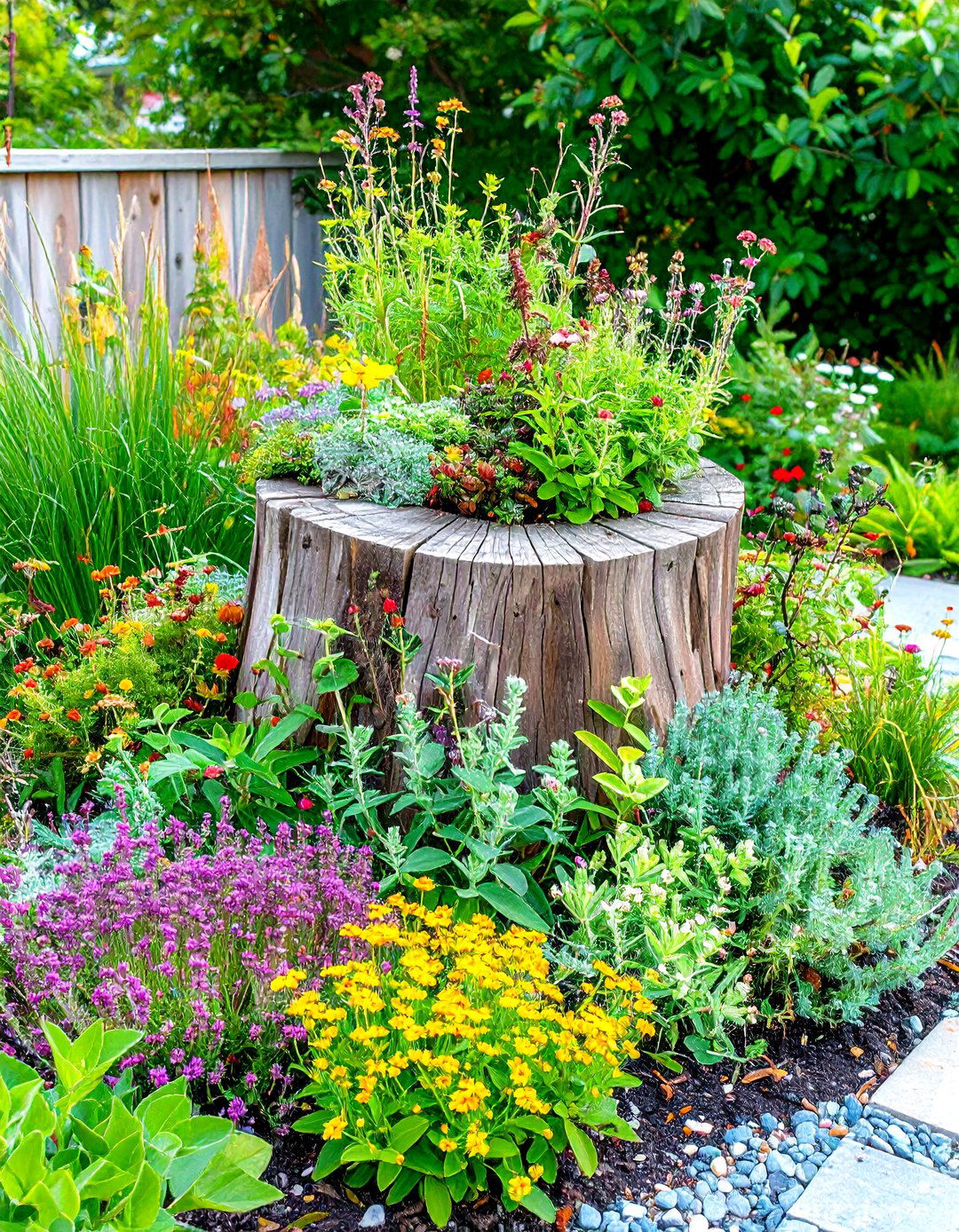
Develop sustainable tree stump fairy gardens featuring living roof systems that provide insulation, wildlife habitat, and natural beauty throughout growing seasons. Cover flat stump tops with waterproof membranes and add shallow soil layers suitable for roof garden plants. Select drought-tolerant plants like sedums, native grasses, and wildflowers that thrive in shallow soil conditions. Install small irrigation systems to maintain adequate moisture during dry periods. Add drainage systems to prevent water accumulation and root rot problems. Include skylights made from clear materials to allow natural light into fairy dwellings below. Plant root vegetables or herbs that fairies might cultivate for food purposes. This eco-friendly approach demonstrates sustainable building practices while creating dynamic, seasonally changing fairy architecture that supports local ecosystem health.
17. Tree Stump Fairy Garden Workshop and Storage Areas

Design functional tree stump fairy gardens that include workshop spaces and storage facilities suggesting active fairy crafting and building activities. Create tiny tool sheds using small wooden boxes positioned near the main stump structure. Fill workshop areas with miniature tools, workbenches made from twigs, and supplies like tiny nails, screws, and building materials. Add storage bins containing craft supplies, seasonal decorations, and maintenance equipment for fairy garden upkeep. Include work-in-progress projects like partially built furniture or garden structures. Position tool racks made from small wooden strips and hang miniature tools for realistic workshop appearance. Add safety equipment like tiny hard hats and work gloves to emphasize fairy construction activities. These functional elements suggest ongoing fairy community development while providing storage solutions for your actual miniature garden supplies.
18. Tree Stump Fairy Garden Communication Systems

Install imaginative communication networks throughout your tree stump fairy garden to suggest how fairy communities stay connected across garden spaces. Create a miniature postal system with tiny mailboxes, delivery vehicles, and mail sorting facilities positioned strategically around the stump. Add telephone lines made from thin wire strung between posts, complete with tiny telephone booths or communication stations. Include message delivery systems using miniature birds or butterflies positioned as if carrying fairy mail. Install signage systems with directional arrows, street signs, and community bulletin boards made from small wooden pieces. Add emergency communication equipment like tiny fire alarm systems and weather monitoring stations. Position communication towers or antenna structures that suggest advanced fairy technology. These systems create narrative possibilities while demonstrating community organization and cooperation principles.
19. Tree Stump Fairy Garden Educational Learning Stations
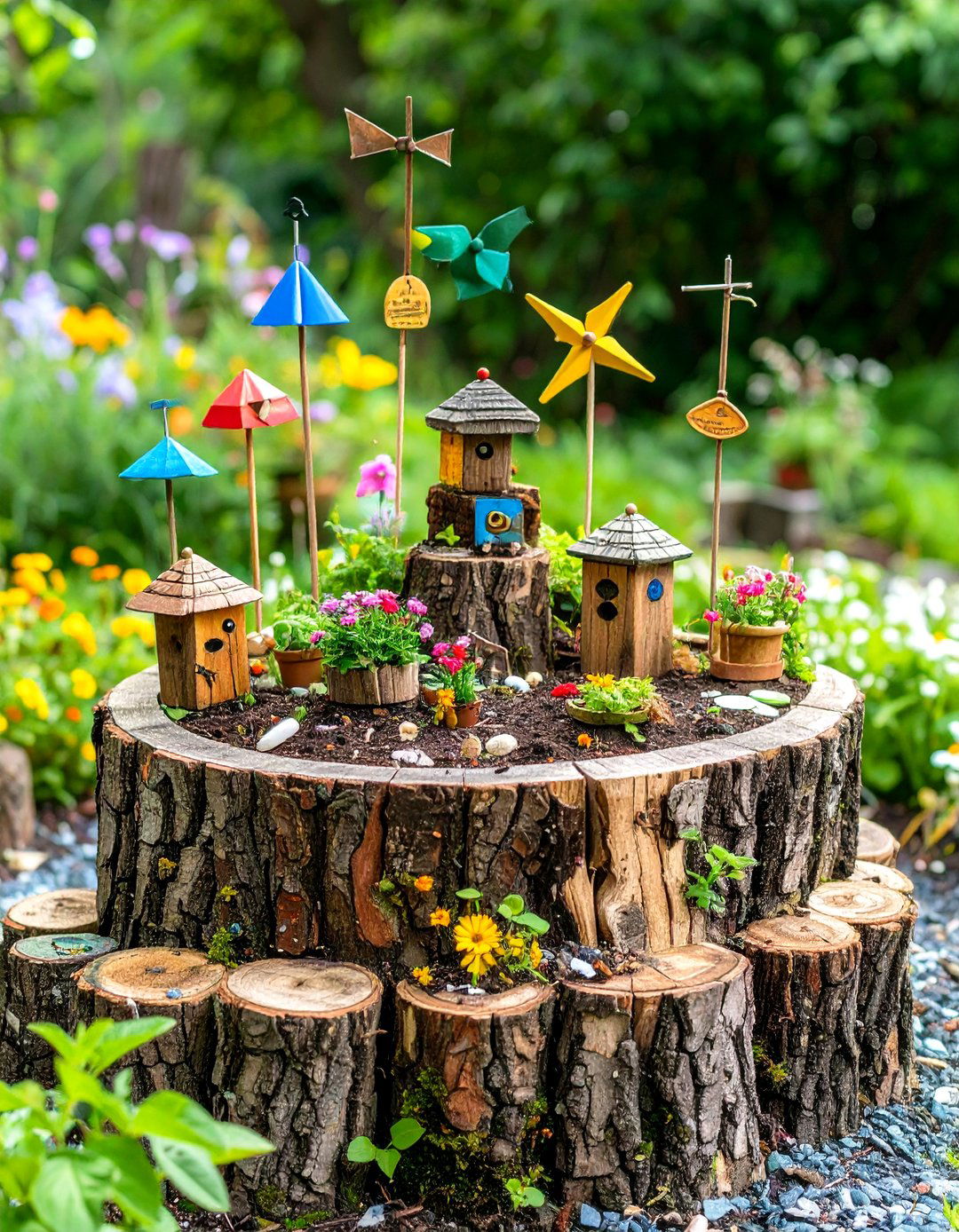
Transform your tree stump fairy garden into an outdoor classroom featuring educational elements that teach children about nature, gardening, and environmental stewardship. Install weather identification stations with miniature weather vanes, rain gauges, and temperature monitoring equipment. Create plant identification areas with labeled specimens and information signs about local flora. Add composting demonstration areas showing decomposition processes and recycling systems. Include solar energy displays with tiny solar panels powering fairy garden lighting systems. Position wildlife observation stations with miniature binoculars and field guides for fairy naturalists. Create measurement stations where children can track plant growth, weather patterns, and seasonal changes. Add library areas with weather-resistant books about gardening, nature, and environmental topics. These educational components make tree stump fairy gardens valuable learning tools while maintaining magical appeal.
20. Tree Stump Fairy Garden Community Gathering Spaces
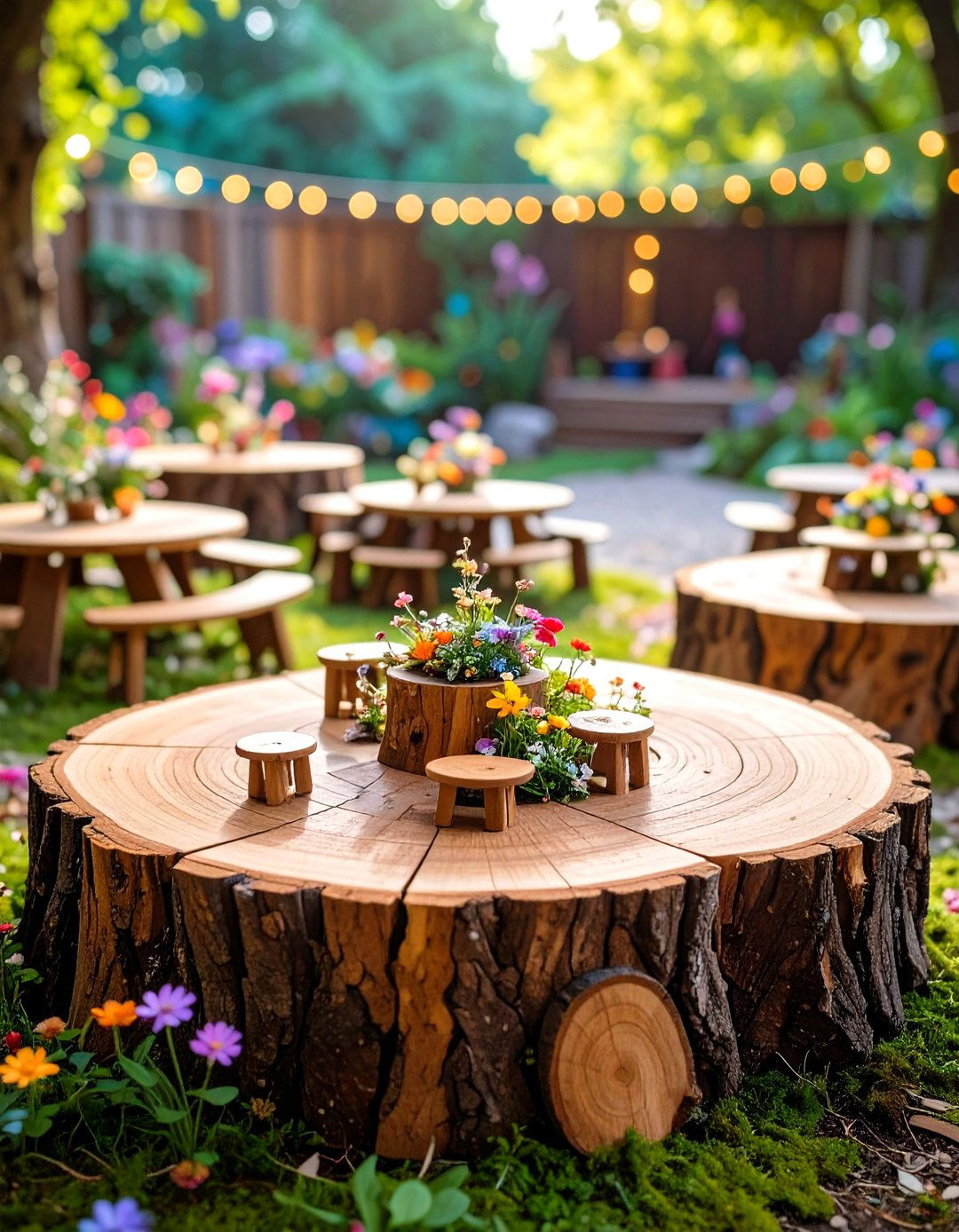
Design your tree stump fairy garden with central gathering areas that suggest fairy social activities and community celebrations throughout the seasons. Create amphitheater seating using curved stone arrangements around natural depression areas near the stump base. Install a tiny stage or performance area with miniature musical instruments and entertainment equipment. Add community dining facilities with large tables capable of seating multiple fairy families for special occasions. Include dance floors made from smooth stone surfaces and festival decoration storage areas. Position community artwork like tiny sculptures, murals painted on flat stones, and collaborative garden projects. Add celebration planning areas with party supply storage and event coordination facilities. Include community gardens where fairies work together on large-scale growing projects. These social spaces emphasize cooperation, creativity, and community building while providing focal points for imaginative play scenarios.
Conclusion:
Tree stump fairy gardens offer endless opportunities to transform challenging landscape features into sources of wonder and creativity. These magical miniature worlds engage imaginations while teaching valuable lessons about recycling, sustainability, and environmental stewardship. From simple door installations to elaborate fairy villages, each project provides unique solutions for unsightly stumps while creating lasting family memories. The combination of natural materials, miniature accessories, and creative design elements ensures that every tree stump fairy garden becomes a distinctive reflection of its creator's personality and vision. Whether you choose woodland themes, hobbit architecture, or modern fairy amenities, your tree stump fairy garden will become a beloved focal point that brings magic to everyday outdoor spaces and inspires continued creative exploration.


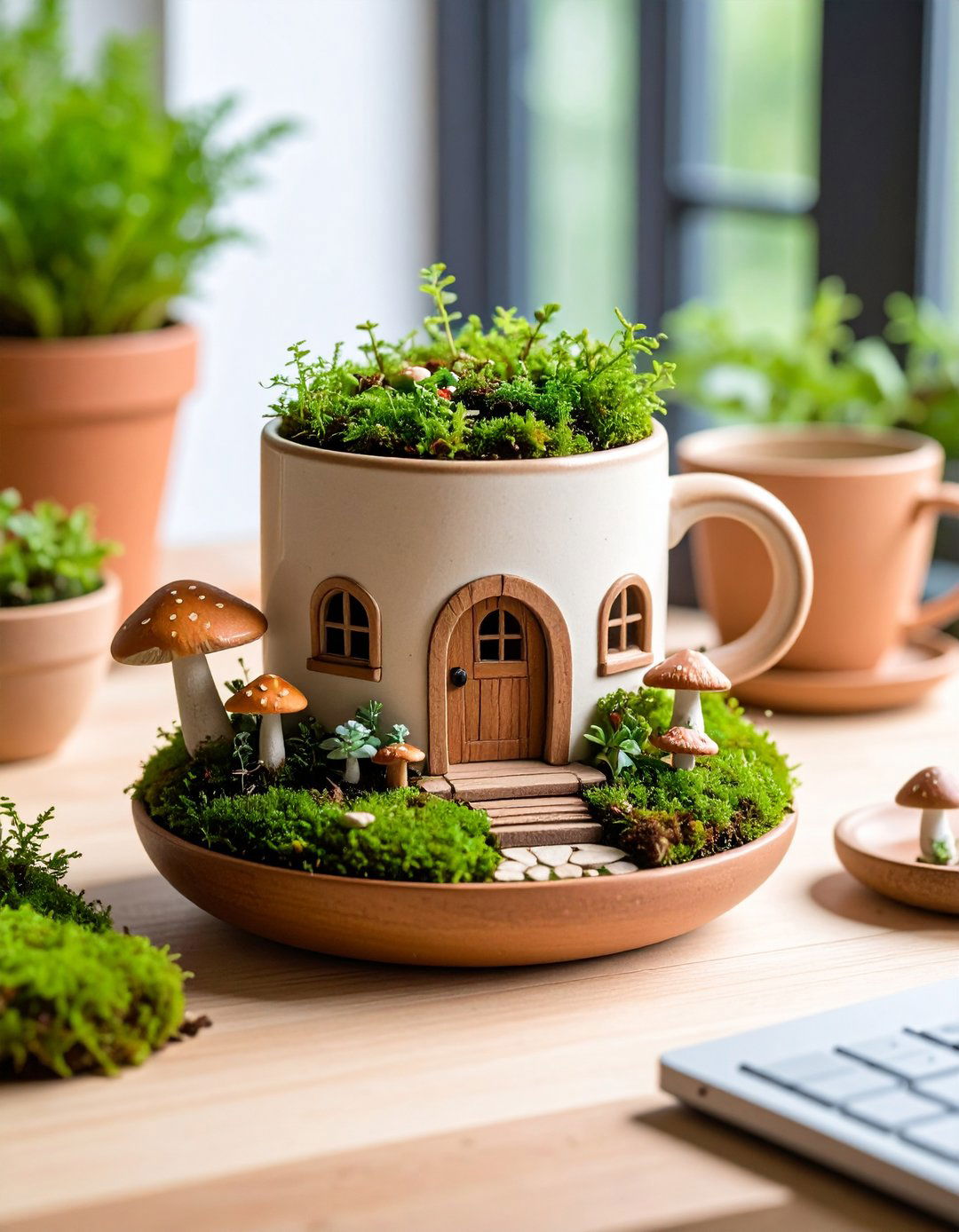
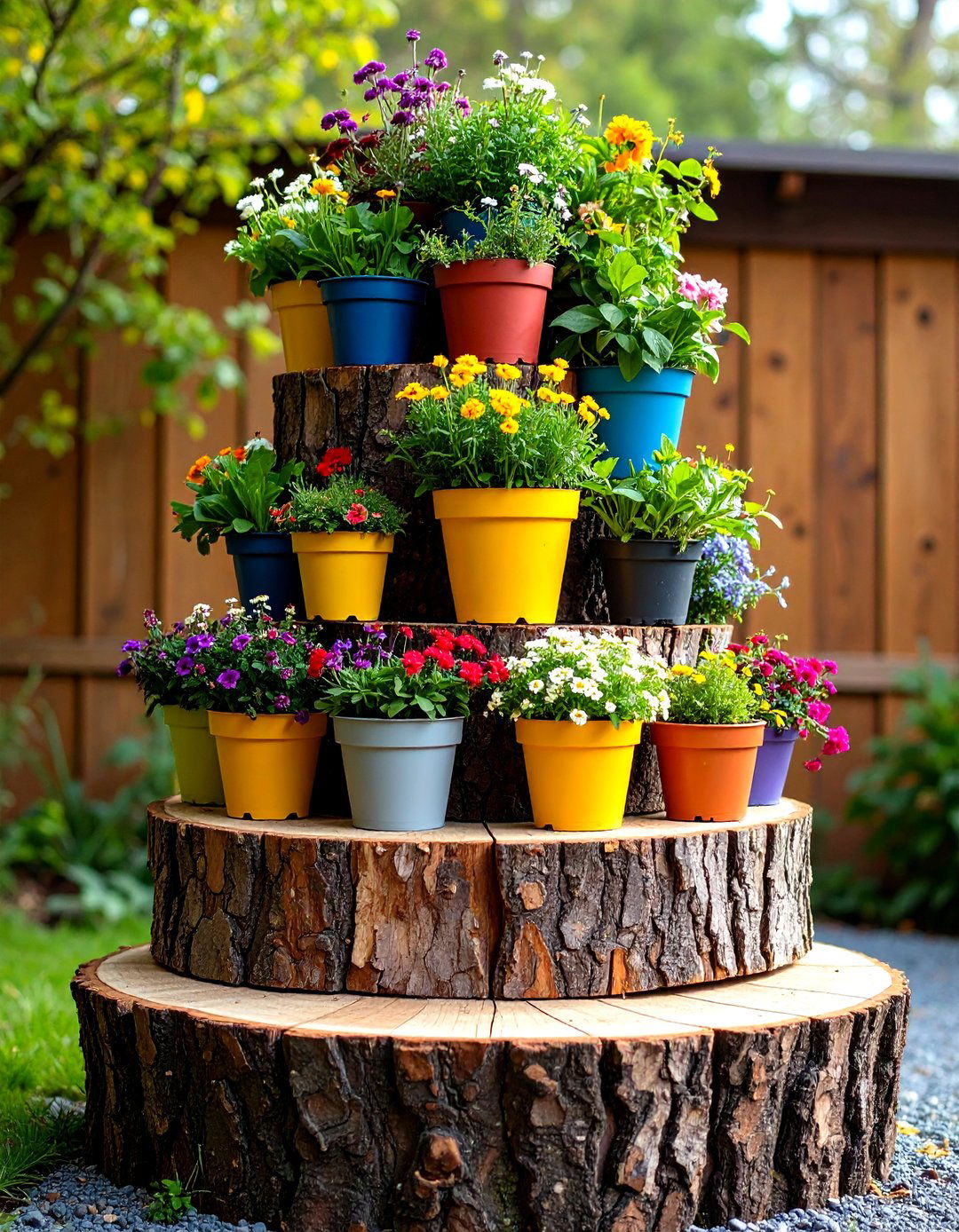
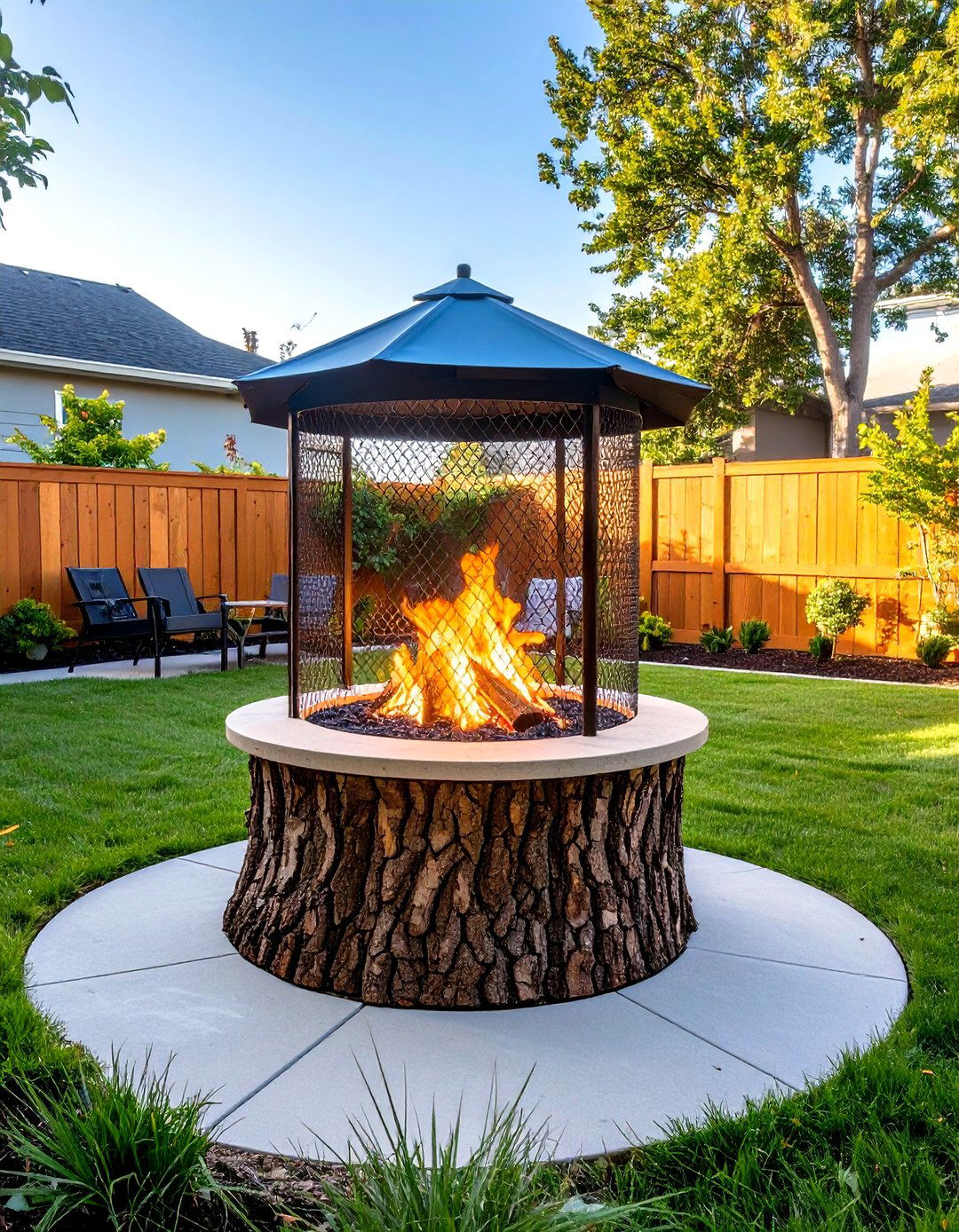
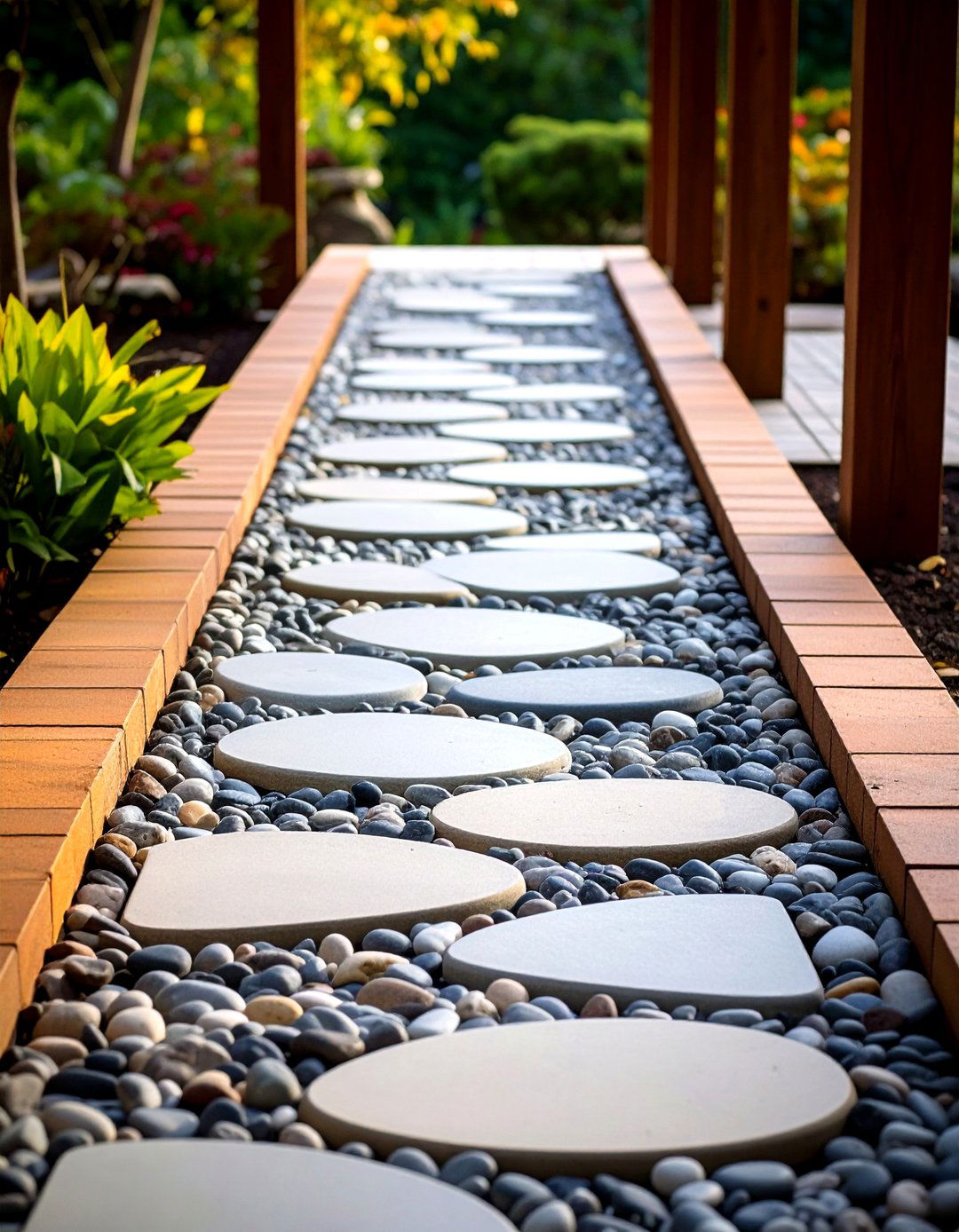

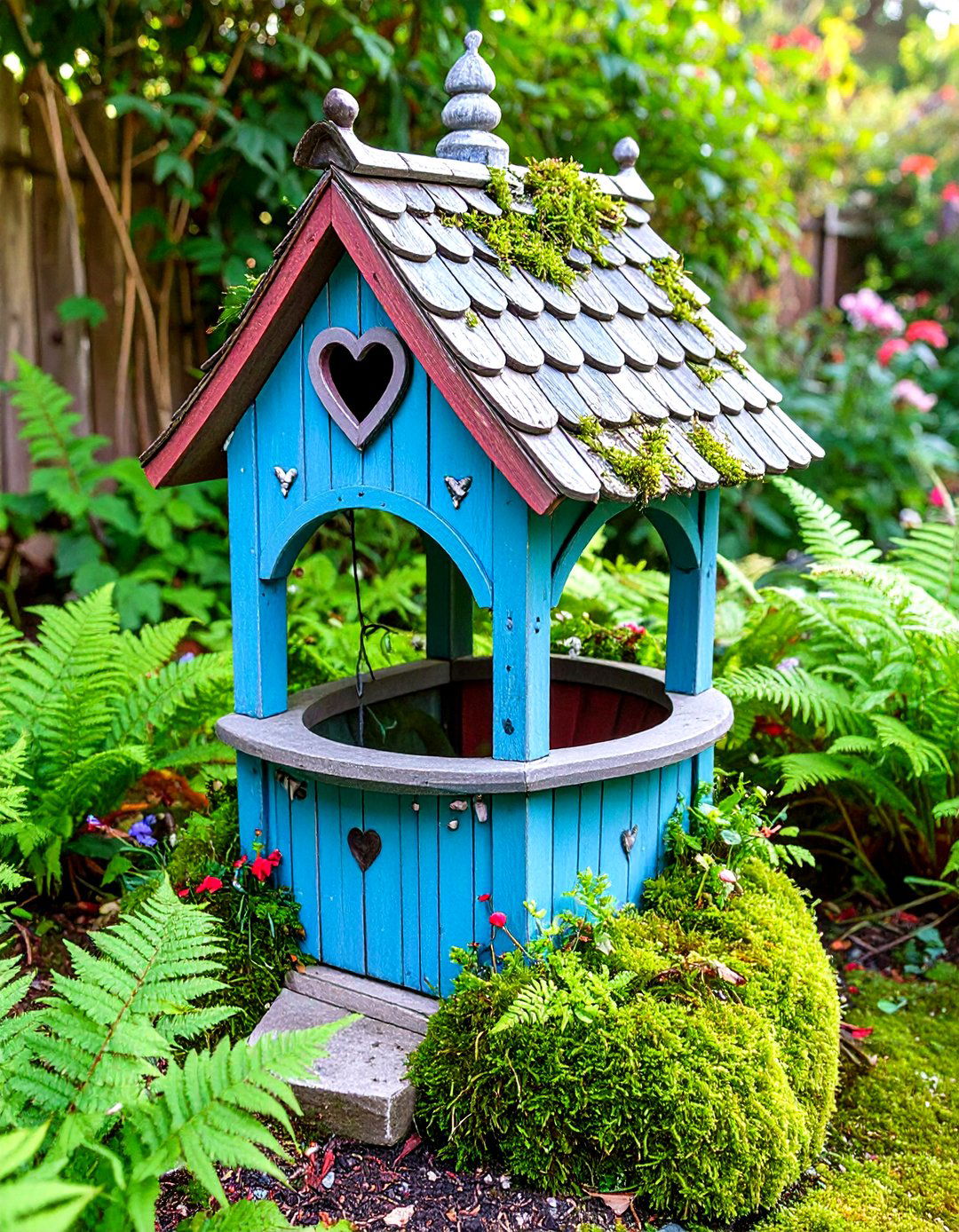
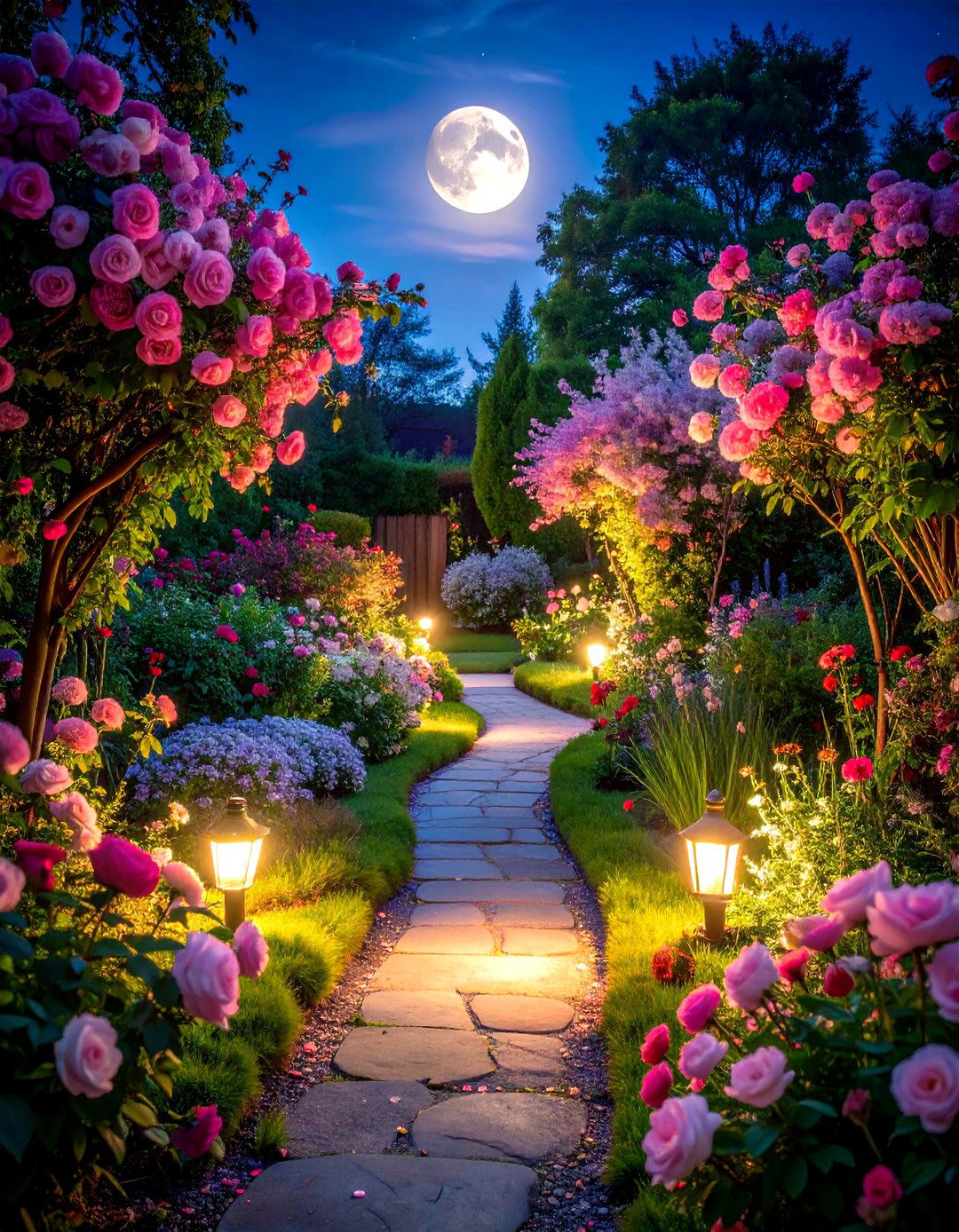
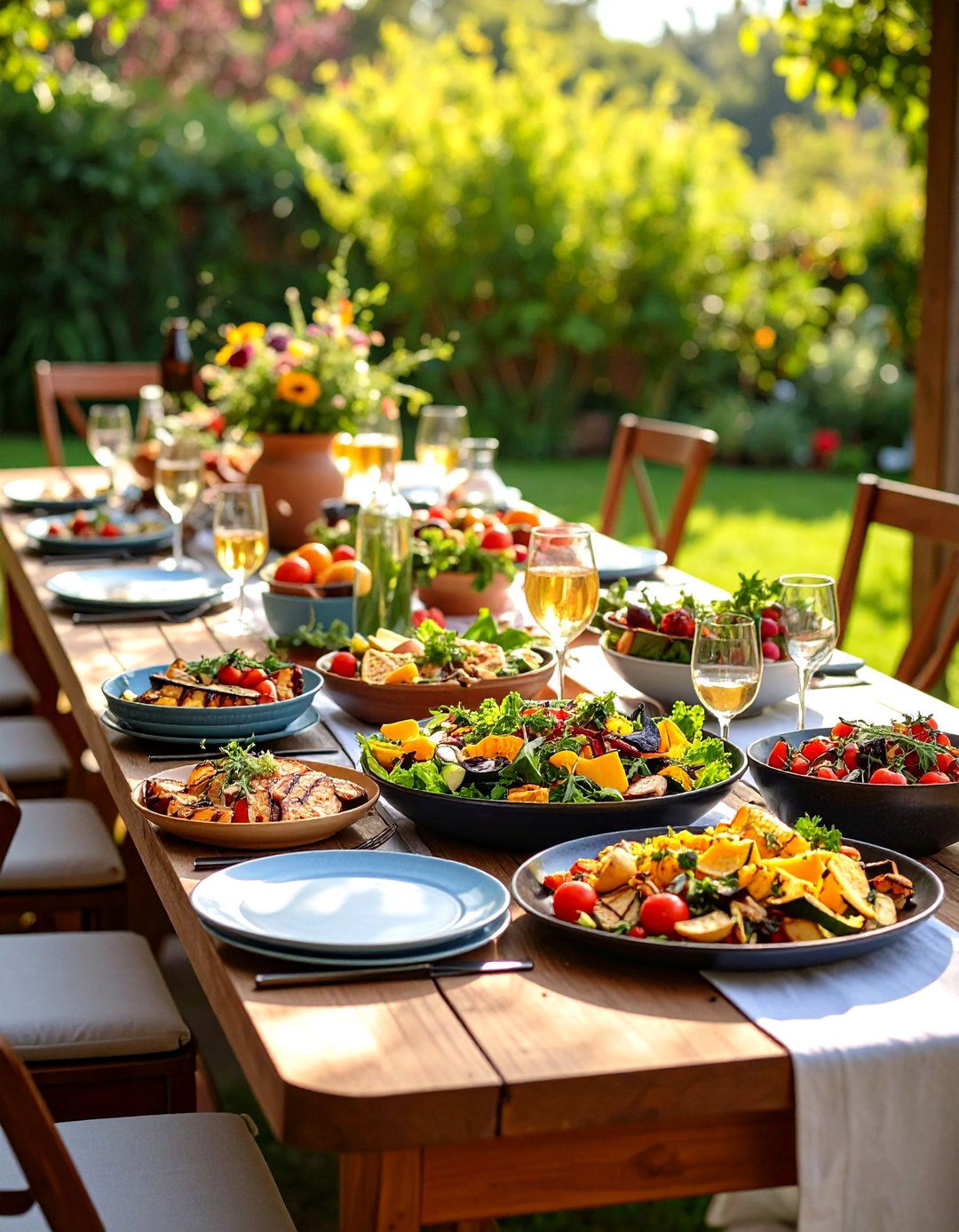




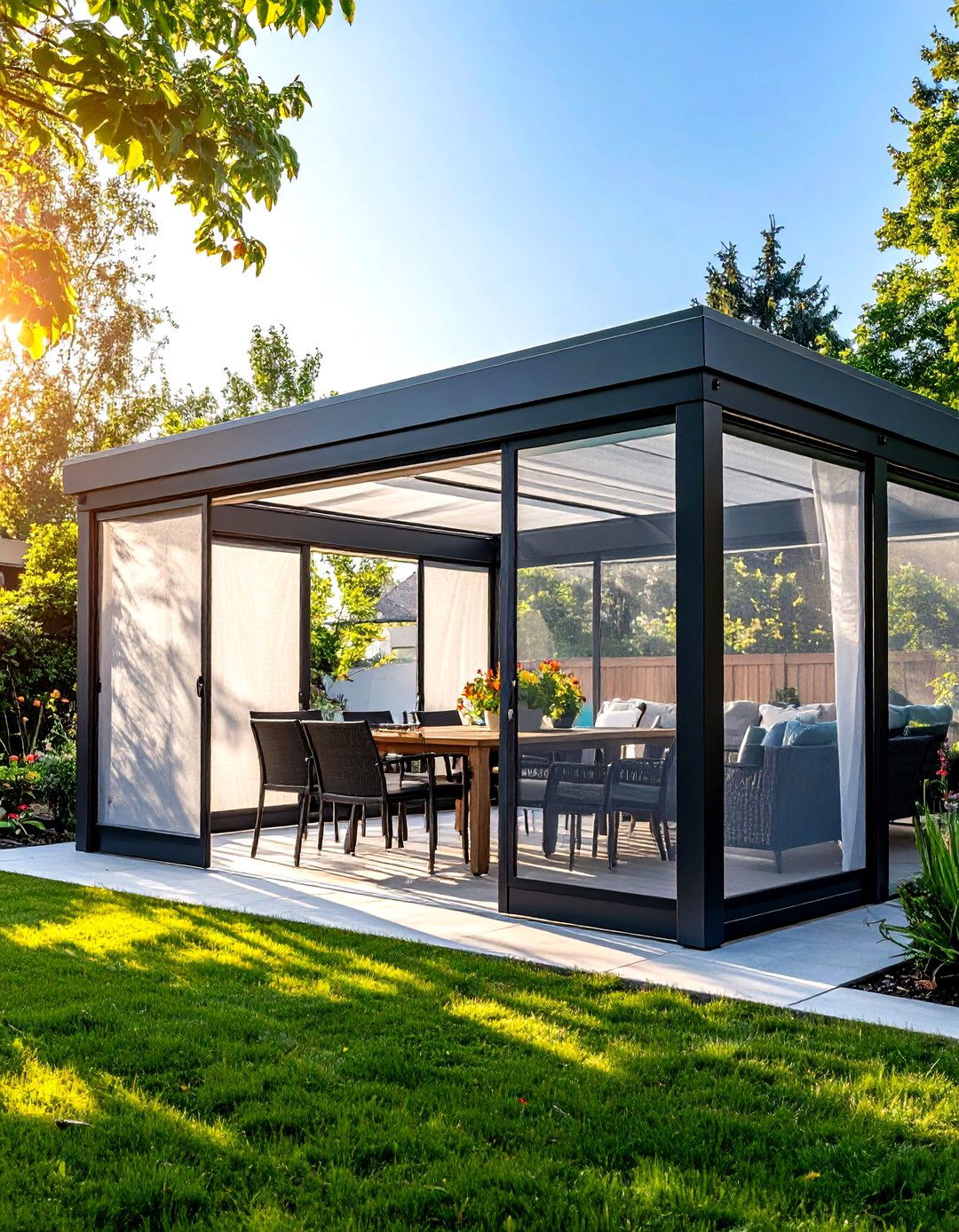
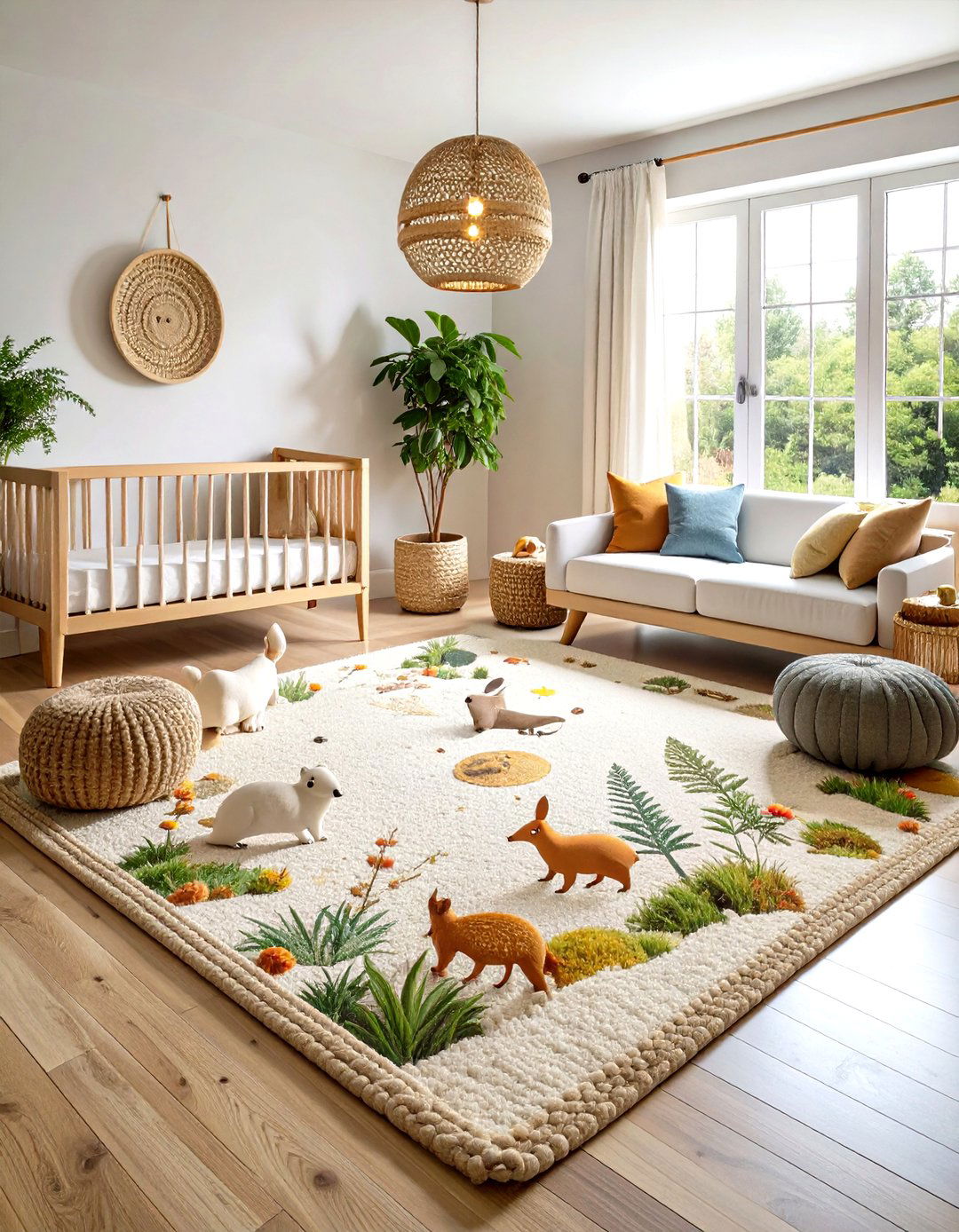
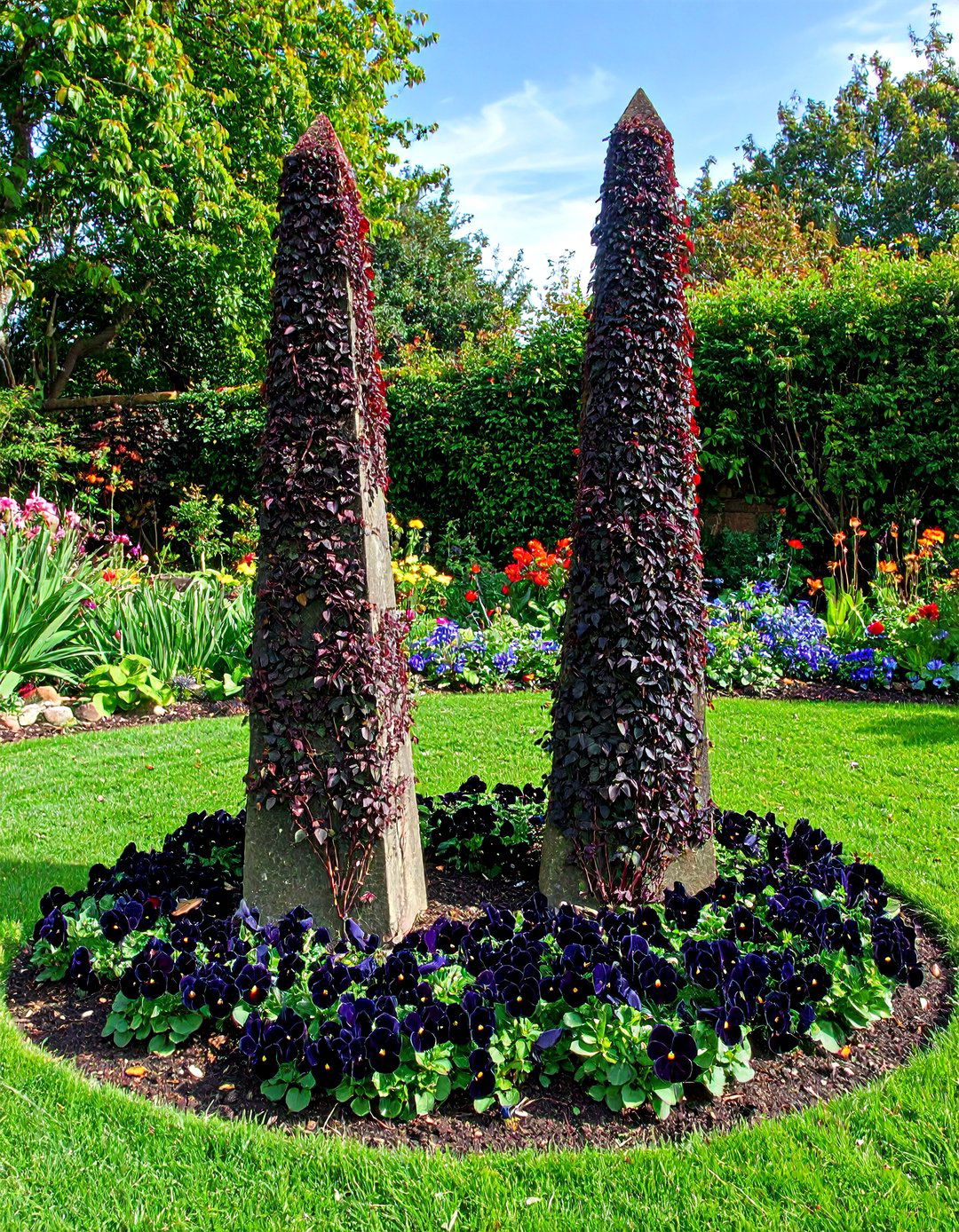
Leave a Reply